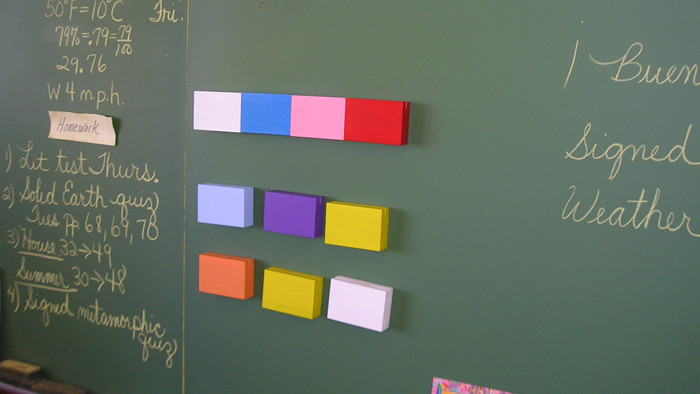
Beverly Menken
Co-author of Hands-On English
with Linking Blocks
 The brain receives information through one’s senses. When multiple senses are employed in learning, one retains the information longer. By using the sense of touch, the tactile sense is stimulated, and one’s hands serve as a neurological connection to the brain. If the visual modality is combined with the tactile, this is a powerful combination for memory. Hands-on-English with Linking Blocks is a method for teaching English grammar that employs the tactile and the visual learning pathways to the brain. When one sees a blue noun block and a red verb block and moves the blocks together to make a simple sentence, the brain is registering the thought, “This is a simple sentence with two parts—blue and red.”
The brain receives information through one’s senses. When multiple senses are employed in learning, one retains the information longer. By using the sense of touch, the tactile sense is stimulated, and one’s hands serve as a neurological connection to the brain. If the visual modality is combined with the tactile, this is a powerful combination for memory. Hands-on-English with Linking Blocks is a method for teaching English grammar that employs the tactile and the visual learning pathways to the brain. When one sees a blue noun block and a red verb block and moves the blocks together to make a simple sentence, the brain is registering the thought, “This is a simple sentence with two parts—blue and red.”
Hands-on-English with Linking Blocks not only incorporates the tactile and the visual modalities for learning, but the student also vocalizes as he arranges the blocks. While the exercise of picturing the colored blocks occurs in the right hemisphere of the brain, the left hemisphere is functioning when one is verbalizing the colors and the names of the parts of speech. Instead of grammar terms escaping one’s memory, the student has a color association which he reviews every time he builds a new sentence with blocks. Purple adjectives, orange adverbs, and yellow prepositions become like velcro to the brain. Tapping the colored blocks and verbalizing these abstract words becomes even yet another powerful memory device.
Nanci Bell on her web site lindamoodbell.com/research/articles records how brain scans recorded an actual growth in gray matter volume when students were taught to read by methods that incorporated imagery (right brain picturing) and verbalization. These scans were done before students were taught by these methods, and then also after the therapy. The students made significant gains in their reading scores, and the brain scans showed actual changes in the brain. See the article and video on her web site. The results are quite fascinating!
Although Hands-on-English with Linking Blocks does not teach reading, the methods of instruction incorporate visualizing the colors in one’s mind and verbalizing the concepts that match those colors. Retention of the concepts is typically greatly improved, and the student develops understanding of patterns in the English language.
In summary, understanding of language concepts such as a noun, verb, and a simple sentence is greatly enhanced by using many senses and by right brain imaging (picturing) and left brain verbalizing. Could this be a revolutionary new learning tool that helps students as never before? Try Hands-on-English with Linking Blocks and see for yourself!

